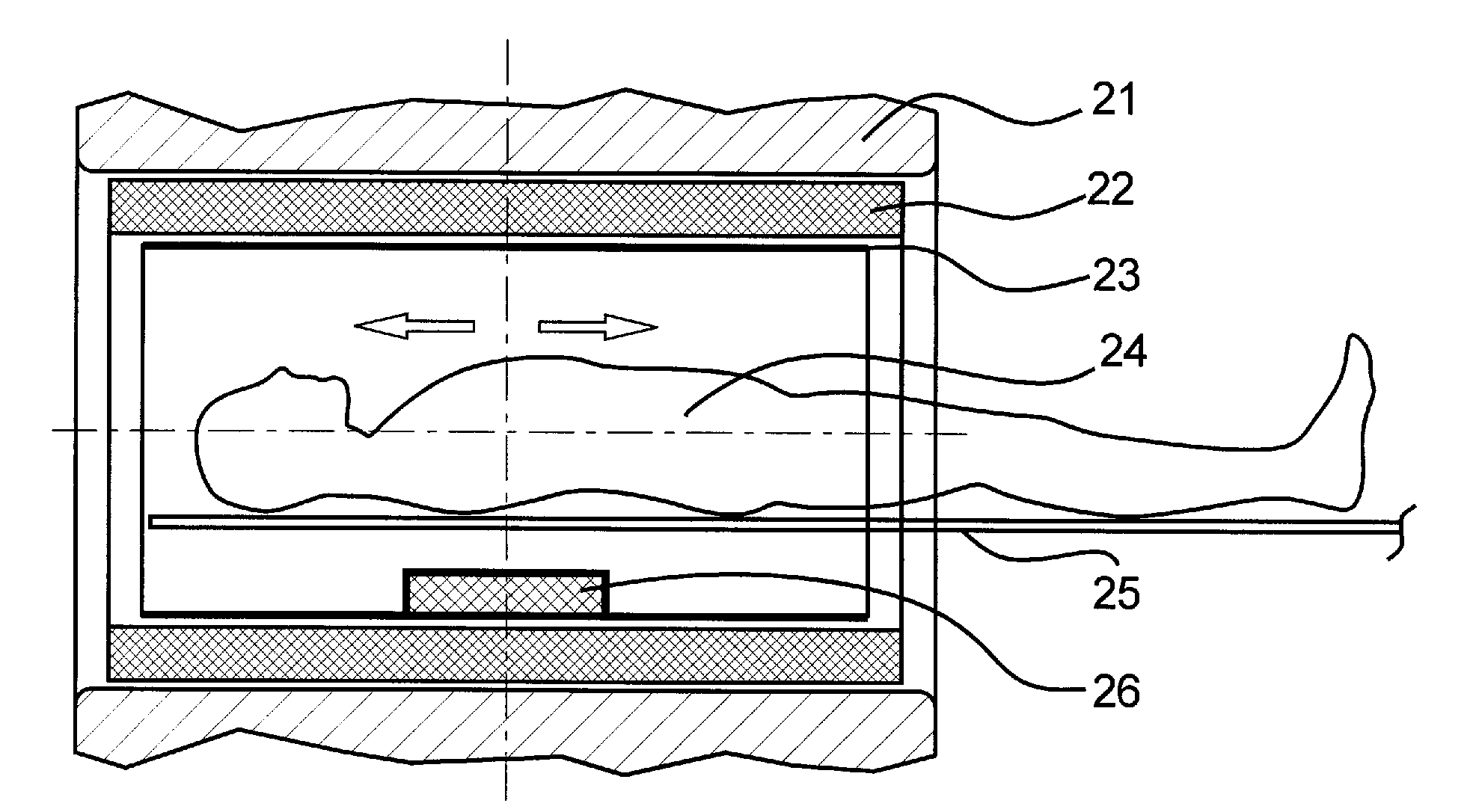Magnetic resonance imaging apparatus for scanning the spine
a magnetic resonance imaging and spine technology, applied in the field of magnetic resonance imaging apparatus, can solve the problems of reducing patient comfort, narrow patient space, and high cost, and achieve the effects of reducing costs, increasing patient space in the emitting body coil, and simplifying the design of the patient tabl
- Summary
- Abstract
- Description
- Claims
- Application Information
AI Technical Summary
Benefits of technology
Problems solved by technology
Method used
Image
Examples
Embodiment Construction
[0028]The primary basis of the present invention is to move the spine coil from the upper surface of the patient table or the interior of the board of the patient table to beneath the patient table, so as to solve the problems, such as the narrow space and high equipment costs in the prior art caused by disposing the spine coil on the upper surface of the patient table or embedding the same into the board of the patient table.
[0029]One manner for realizing the magnetic resonance imaging apparatus for scanning a spine of the present invention is to fix the spine coil directly on the lower surface of the board of the patient table. Compared with the prior art, this does not change the length of the spine coil, and it only changes the fitting position of the spine coil. However, after having fitted the spine coil to the lower surface of the board of the patient table, the distance between the inner wall of the body coil above the patient table and the patient is increased, so the patie...
PUM
 Login to View More
Login to View More Abstract
Description
Claims
Application Information
 Login to View More
Login to View More - R&D
- Intellectual Property
- Life Sciences
- Materials
- Tech Scout
- Unparalleled Data Quality
- Higher Quality Content
- 60% Fewer Hallucinations
Browse by: Latest US Patents, China's latest patents, Technical Efficacy Thesaurus, Application Domain, Technology Topic, Popular Technical Reports.
© 2025 PatSnap. All rights reserved.Legal|Privacy policy|Modern Slavery Act Transparency Statement|Sitemap|About US| Contact US: help@patsnap.com



